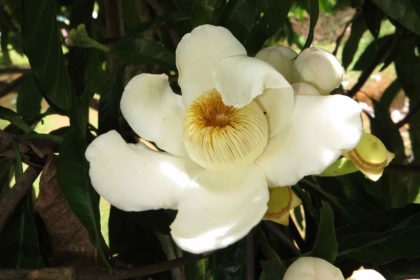
At Ocean Forest’s Ethnobotanical and Permaculture Gardens
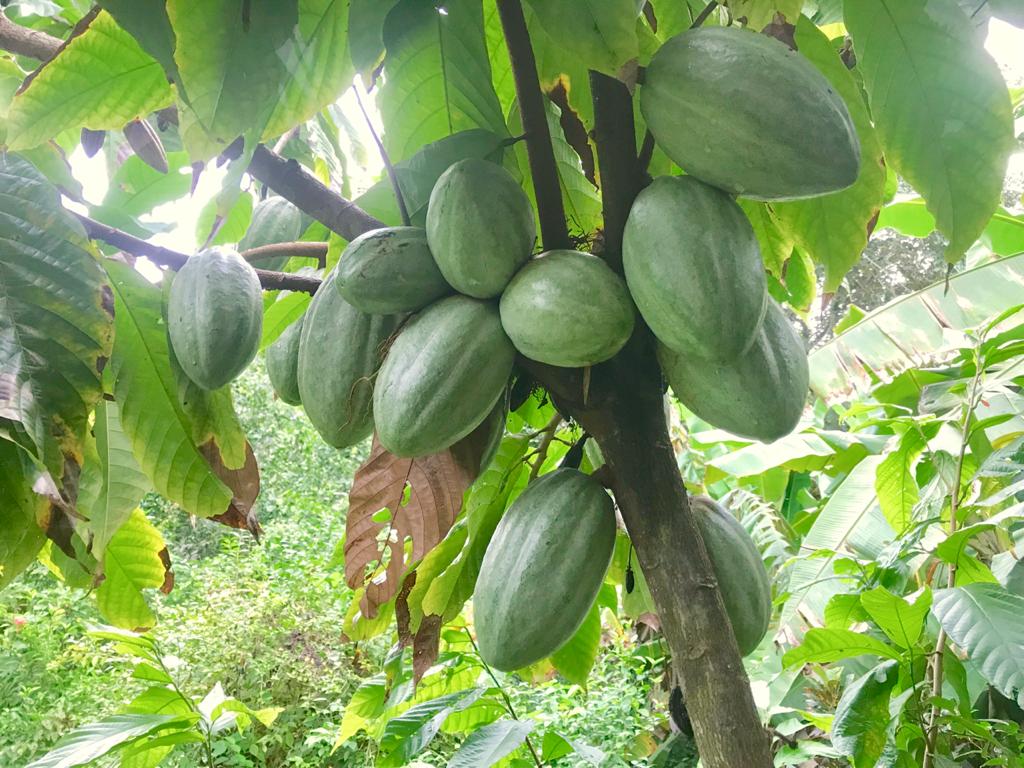
Cacao 
Cacao branches
Now reaching into 20 years!
The extensive gardens at Ocean Forest Ecolodge harbor hundreds of species of native and rare ethnobotanical treasures from Central and South America as well as the Asian Tropics. These include fruit trees that guests enjoy seasonally, aromatic herbs, medicinal and sacramental plants, detox bitters, emollients and adaptogens, many of which are served in teas at lunch and dinner or applied upon request. Our permaculture gardens produce a seasonal abundance of foods, tubers and edible greens, fruits of all types, flavors and consistencies, natural sweeteners, vegetables and spices.

Learning Plants is a Journey of Self Discovery
Our bodies are innately savvy! That we can perceive and experience the sweet, and the spicy, the salty, and the sour and the bitter flavors, in foods and plants is amazing! Few realize that these flavors actually correspond to the bodies organ systems. Each flavor correlates to on of our five principal organ pairs. Sweet relates to the stomach and the spleen. Spicy to the lungs and large intestines. Salty to the kidneys and urinary bladder. Sour to the liver and gall bladder, and bitter to the heart and small intestines, as well the triple warmer and the pericardium. This wisdom has been past down along the guidelines of the the Five Elements theory, an aspect of Traditional Chinese Medicine. An amazing aspect of getting to know plants is that they bring out in us so many aspects of who we are ourselves. Especially when we get to know them by drinking them, smelling them and tasting them, by interacting with them. By using our bodies as instruments of interaction towards self and natural discovery.
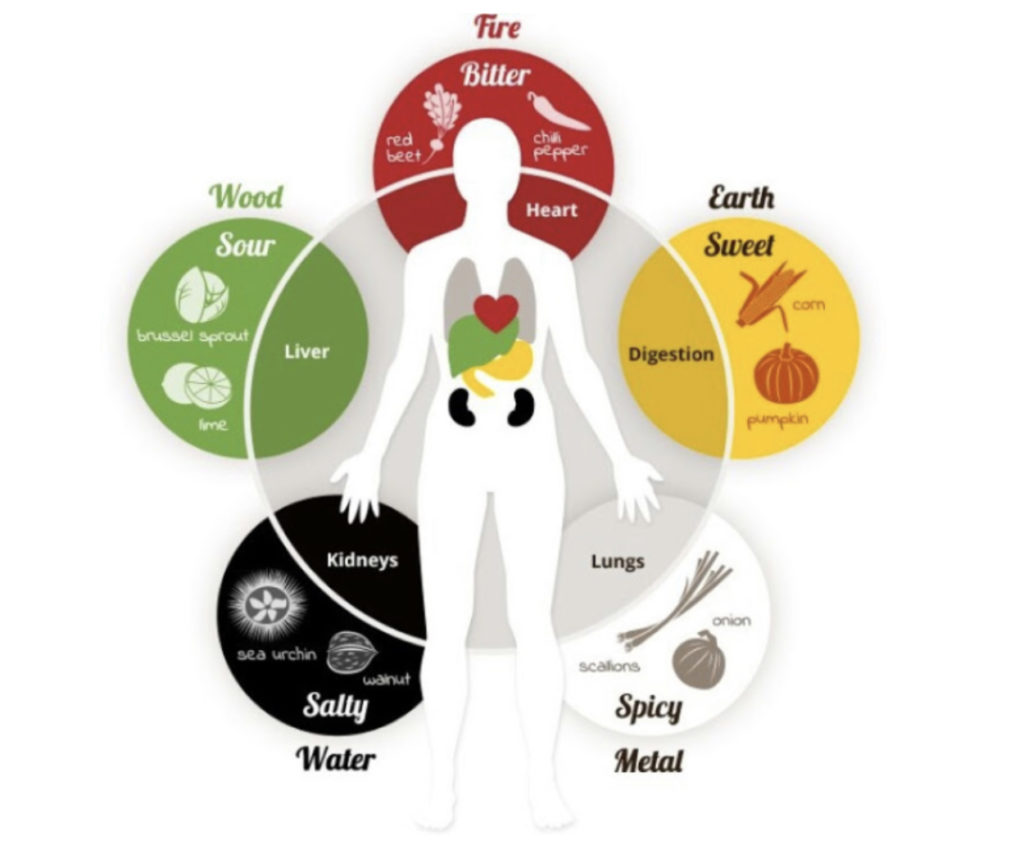
Our bodies are vast tools and can perceive very different sensations brought upon by the plants. We not only learn about the fascinating reality of plants but how our bodies is a seamless part of the natural world. How else could we have the sensual perceptions to experience them. Plants expand the awareness of who we are, they allow us an opportunity to get to know deeper aspects of ourselves! We can look at this as, discovery, but it is also elevating the common body of knowledge. Today more than ever, mother nature deeply aspires for her children to return. Our devotion to upholding and teaching the living science of ethnobotany is a passion we carry deep in our hearts, and on our taste buds too!

Let us Follow the Five Elements Through, the Garden and our Senses
As a way into the garden, let us use our senses, to learn some plants. Let us follow the five basic elemental groups, in their creative cycle of expression, starting with the Earth element whose color is yellow and its flavor is sweet. Earth creates the Metal element whose color is white and flavor spicy. Metal in turn creates Water whose color is Black or Blue and whose flavor is salty, and Water creates wood, whose color is green and whose flavor is sour. The Wood element in turn creates the Fire element, whose color is red, the flavor representing this element is bitter, and the cycle continues. It is the constructive cycle of the five-elements. Alongside these color and flavor categories, let me introduce you to just some of our most notable leafy friends, swaying in the jungle breeze.
Some Leafy Friends, Swaying in the Jungle Breeze

A Journey through the Elements, starting with the Element Earth.
In the Earth element, most prominent, is elegant sugar cane, striped in pinks, greens and purples, Saccharum officinarum, the grass of grasses, held sacred among many indigenous tribes from Polynesia to the Amazon. In my book “Rainforest Medicine – Preserving Indigenous Science and Biological Diversity in the Upper Amazon” I share a Kichwa creation story, outlining the origin of six plants, all of which can be met here in our garden.
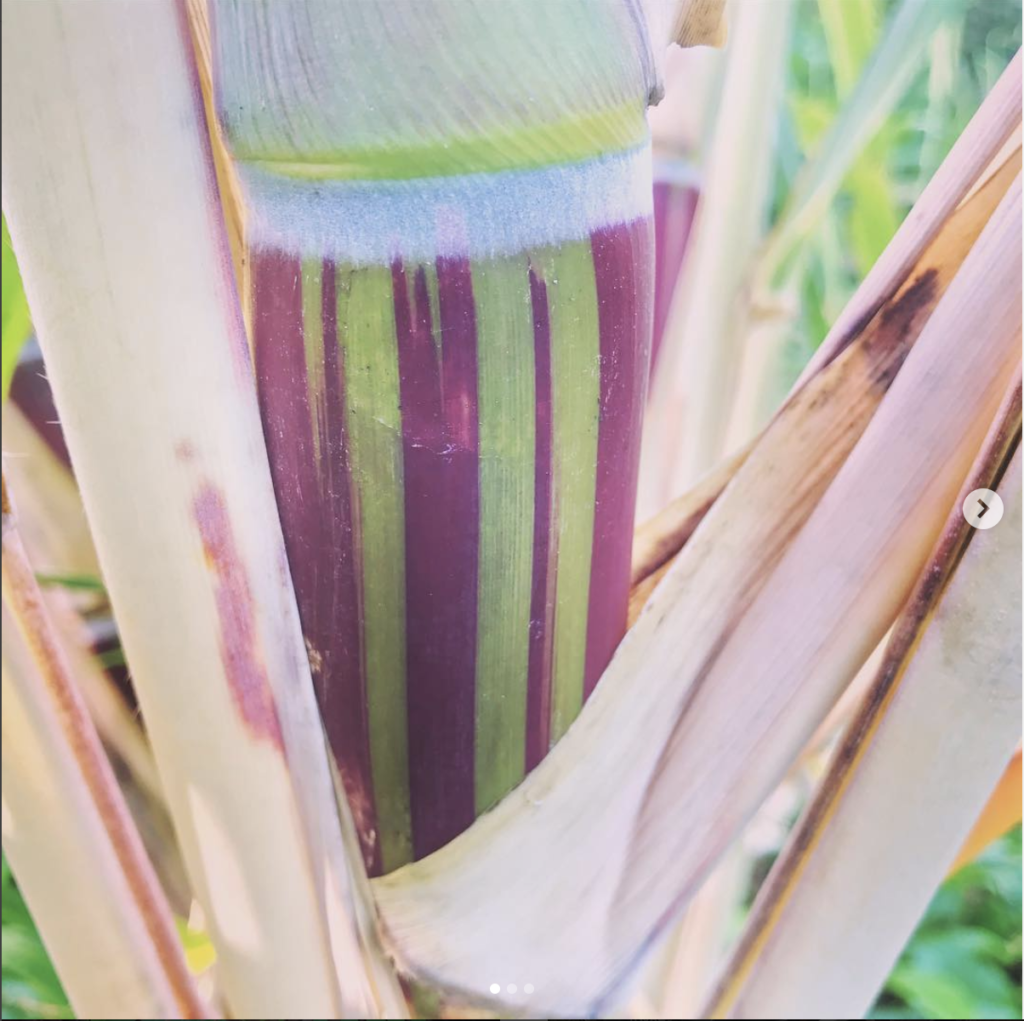
The Legend of Atacapie and Shiu Amarun
In times of old, long long ago, Atacapie, the Seven-headed boa-of-disintegration-and-chaos slayed Shiu Amarun, the Glistening-silver-fertility-mother-boa-of-the-Earth. From her decomposing heart, to aid humanity in maintain Heaven on Earth, grew seven plants. These being, Dunduma, a sedge in the genus Cyperus used for riding anemia, Uchu, this being Capsicum, a red-hot chili pepper, Palanda, a date banana, Musa x acuminata variety Lady Finger, Ayahuasca, Banisteriopsis caapi, the sacramental entheogen, and Chalipanga, being Diplopterys cabrerana, the “kindling leaf” that brings “light” to the entheogen. An extra spicy ginger called Pajujinjibri, a small ancestral type of Zingiber officinale, and Iru, our beloved Sugar Cane. From its stems, sweet juice pours when macerated, and is believed the world over to bring Heaven to Earth. Amazing to think that form this cane not just sugar but also ethanol is produced, now that is a potent plant indeed! And there are many varieties too, like Caña mula, a dark purple cane excellent for animal feed and for making molasses.

Dunduma 
Uchu – Chili 
Palanda – Date Banana 
Ayahuasca 
Chalipanga 
Paju Jinjibri – Ginger 
Iru – Sugar Cane
Earth – Sweet Goodness Mamas continues…
Other sweet goodness mamas that exist in the garden are, well of course varieties of Mangos, Mangifera indica of the Anacardiaceae family, this being the family of Cashews as well as the Poisonous Ivy’s, that I actually call Pretty-oak; that’s a whole another story. Among my most favorite is the classic Mango-criollo, this being the native or wild mango, its round fruit is not the best for eating given the hairy fibers, and it doesn’t look all that fancy given the black splotches on its peel, but when made into juice…my, my…the richness of its flavor surpasses that of any other mango. Another variety, with a citrus tangy tinge, is the rare Mango-papa, the smallest of all mangos, that in juice is just as a good. These mango varieties are highly medicinal as well, the young red leaf shoots are simmered in milk for lung ailments, in particular chest cough, and the bark heals sprains and bruises. Also, when speaking of mangos, with highest honor I am obliged to mention, the all-time-classic Mango-zapata, who has a larger oblong fruit that when ripe actually stay green, thus going unseen by monkeys! Inside she is richly golden in color and variety, has somewhat of a tangy relish and is mango – at its purest and most fabulously finest!
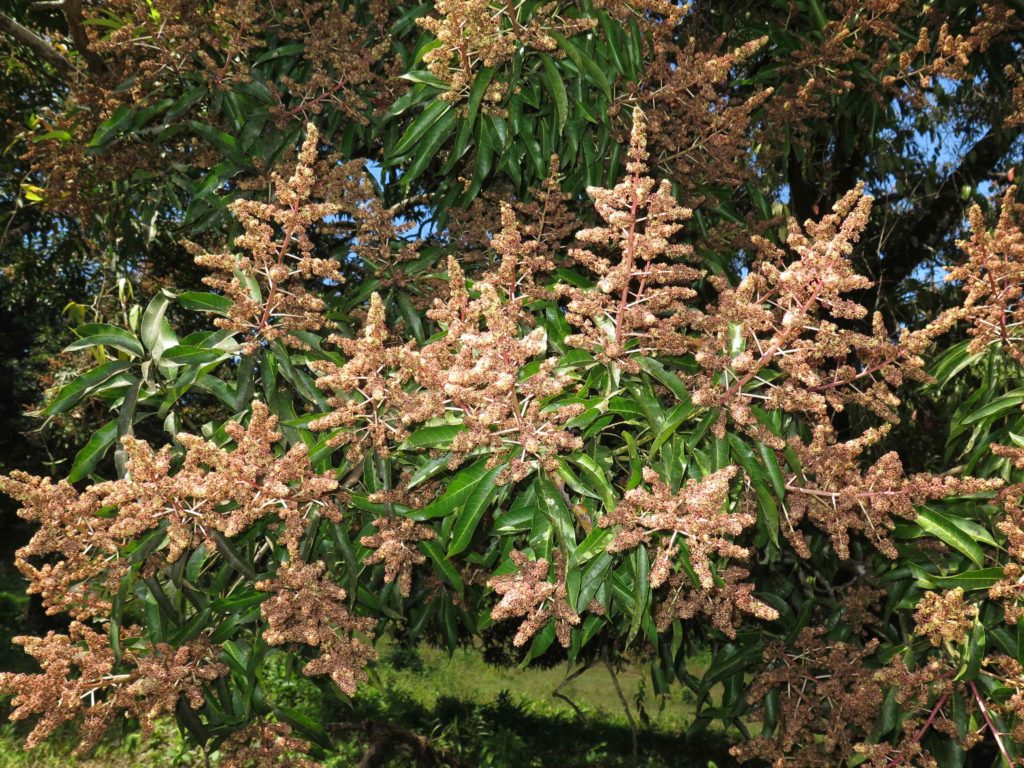
Mango criollo in flower 
Mango criollo fruits


I might add a new addition to the garden is the Dika mango, Irvingia gabonensis, from Africa a source of a highly nutritious and oily nut. And there’s, Yuplón, also known as Ambarella, this being Sponias dulcis, another sweet yellow fruit. And please let us not pass Earth element without mentioning our cherished and adored Cacao, Theobroma cacao, food of the gods, of which we have many varieties and wild relatives growing such as Cupusassú, Theobroma grandiflorum, and Pataxte – Theobroma bicolor, all classified as pertaining to the Malvaceae family.
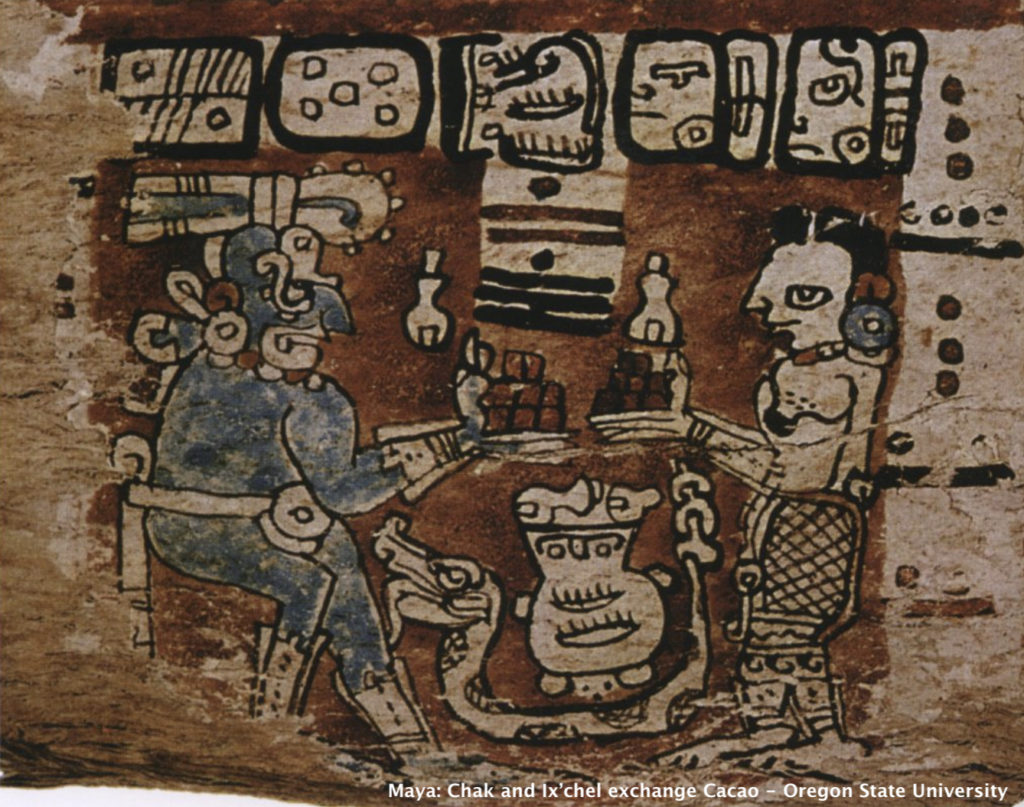

Now when looking at plants with yellow flowers, a most prominent species is Cassia fistula of the Fabaceae, the bean family., known locally as Caña Fistula. At the beginning of the dry season these trees are covered in golden yellow flowers, why they are also known as Golden shower. The bark is a powerful purge, used only by skilled herbalist.

The Metal Element, White colored and Spicy flavored plants
Let us follow the constructive cycle of the five-element theory, Sweet and the color yellow that is the Earth element makes, the Metal element, whose color is white, and flavor spicy. Here of course, first and foremost, are the numerous varieties of chili peppers, these pertaining to the genus Capsicum, of the mysterious Nightshade family, the Solanaceae. We have many types growing, a particularly impressive variety is the one called Panameño, it is a curled rounded green to orange to red fruit, it is spicy just enough and loaded with an aromatic, richly complex flavor. Few people associate garlic to the tropics, but indeed, we have here our own version, it is the Garlic Vine, Mansoa alliacea, a most peculiar vine pertaining to the family Bignoniaceae, that is the family of the infamous Pau de Arco, known locally as Roble Savana, Tabebuia rosea, with highly medicinal bark used as an adaptogen. The Garlic vines’ lushly abundant purple flowers, reveal themselves only every three years, emitting a pungently-sweet and velvety-deep aroma. The balm drifts thick through the air and reaches all regions of the campus. The bark of this vine is rasped in water to emit a juice with a flavor pretty much spot on garlic! And the leaves are used for steaming fish, filling the meal with its rich garlic flavor. This vine also has many medicinal uses, similar to garlic it is antibacterial and antiviral. In the Amazon, the deep forest Waorani call her Wigagen, and believe when it is grown around the house, it wards of snakes and jaguars. When menacing creatures come near, it makes their teeth tingle unpleasantly, this annoys them, and they retreat. More commonly known as Ajo Sacha, the vine is used for dieting, to learn to heal, its spirit is believed to be that of two brilliantly green parakeets. Another plant characteristic of the color white is Yuca, Manihot esculenta of the Euphorbiaceae. Her starchy white roots are a staple of the people, from which aun is made a yuca flatbread and farina, a type of yuca granola.

Panameño 
Garlic Vine in bloom 
Roble Savana 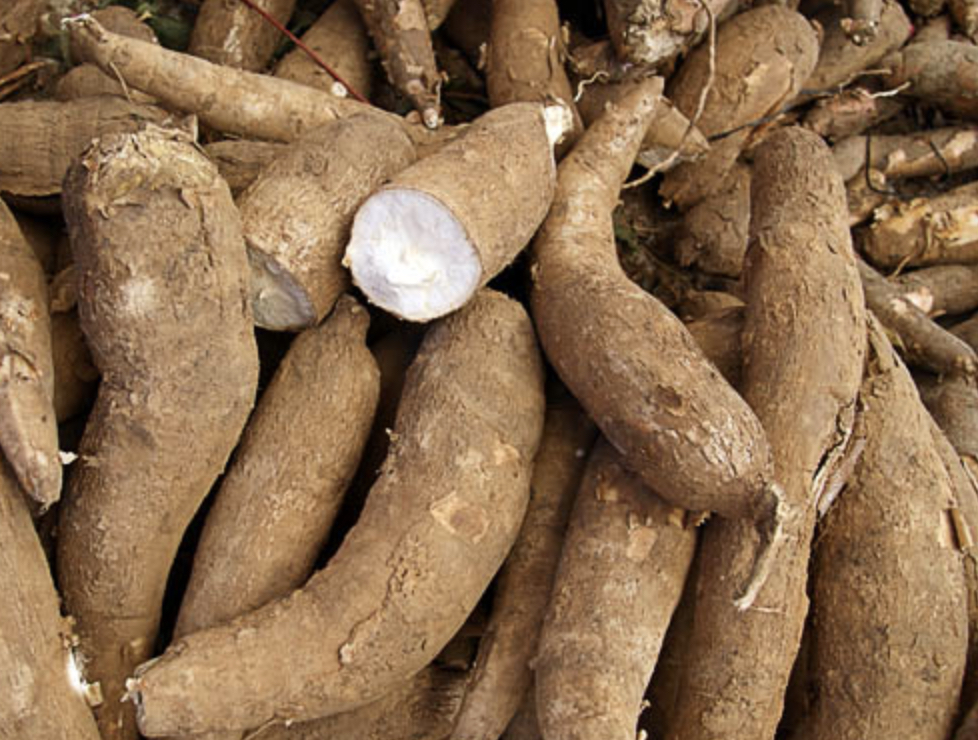
Yuca tubers
The Metal element creates the Water Element
The Metal element creates the Water Element, whose associated to color black and the flavor is salty. Possibly what most represents the salty flavor even though it’s not really that salty, yet being it grows in salty ocean side sand, is the all-time Coconut palm, Cocus nucifera, a true Arecaceae,and of these we have many types. The Filipitas, is a smaller green coconut with the best drinking water, and there is a golden Filipita variety as well. Our native beach Criollo’s grow very tall, the oily, meaty kernel, is used for extracting coconut oil. Fifty-five Criollo-coconuts peeled at the time of mid tide dropping, and grated at the time of mid tide dropping, makes one gallon of oil. We keep this regularly on hand! Another interesting variety is the Chocuano. This large and robust palm, has immense round nuts, used in folk medicine, made into syrup to treat bronchitis and as an extract for riding all types of parasites! And here, an interesting article on how to grow and care for your own Coconut palm: How to Plant, Grow, and Care for Your Coconut Tree.
The coconut indeed is a sacred plant, Polynesian folk myth relate a time of drought and famine and, Creator, sank into the earth and from his crown, grew the Coconut palm, to quench the thirst and hunger of his people. From where comes the song line “Palm tree in Jah sun, giving life to everyone.” There are many legends about the the cherished Coconut palm.

Black fruit that might align to this category, is the curious Noni, Morinda citrifolia of the ubiquitous Rubiaceae. This fruit is actually white when ripe, but when prepared, by crushing the ripe fruits in a mesh bag and hanging this in the sun, a jet-black ink drips out that is drunk. Revered as a holy medicine, known as a general tonic, and from its bark is produced a brownish purple dye.
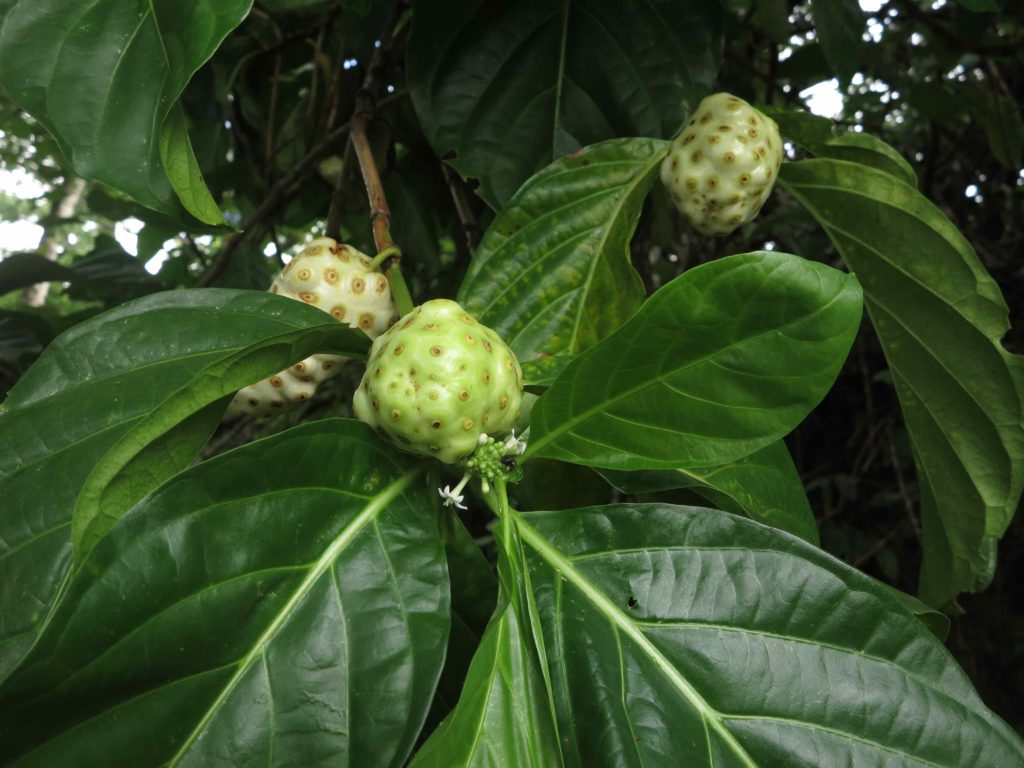
Noni 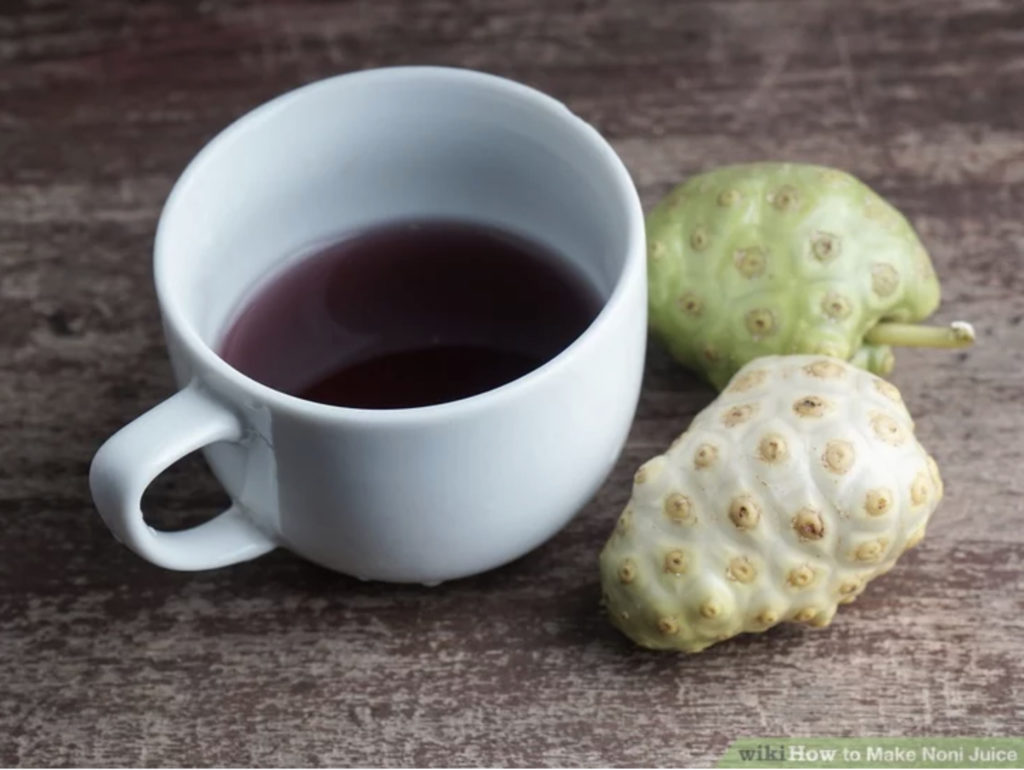
Noni Juice
The Water element creates the Wood element
The Water element creates the Wood element, whose flavor is sour and color is green. In this group we must not overlook the Membrillo, Averroha bilimbi, a Sour-grass and Star-fruit relative, member of the Oxalidaceae family. The pickle shaped spring-green colored fruits of this small tree are so sour, that they are actually used by locals to bleach clothing! And does it keep those shirts white! We always add a few fruits into chili sauce, and they are also employed in the treatment of rheumatism, skin irritations, for inflammation and to control obesity. Another sour plant is Caña agria, “sour cane” we have two types, a cane in the genus Costus, pertaining to the Zingiberaceae, the ginger family and a lanky cane like vine, that also goes by this same common name. This Caña agria, known in English as Pinkfrindge, and in the Nahuatl language as Xocoyoli, is a Melastome, Arthrostemma ciliatum, sour in flavor it is used effectively to treat lower back and kidney disorders.

Bilimbi 
Caña agria 
Xocoyoli
As the Wood element creates the Fire element
As the Wood element creates the Fire element, whose flavor is bitter and color red, I am obliged to ask you the following. Have you ever nibbled on a leaf of Gavilana? This bushy herb, Neuroleana trilobata, a relative of the Sunflower or Asteraceae family has an extremely bitter juice that is used as a liver tonic, an antiparasitic, a decongestant and is anti-catarrhal. Most people when they taste this have never experienced something so bitter. Bitters tonify the liver and the heart and promote circulation and decongestion. Now, if Gavilana ain’t bitter enough, well then let’s nibble on some Hombre Grande, Quassia amara, Bitterwood. A native understory woody tree, member of the Simaroubaceae family, that is well known for its outstanding healing virtues. Employed in the treatment of Diabetes, Malaria, Ulcers, anti-leukemic, scalp issues and more, Hombre Grande is so bitter that it’s hard to fathom a flavor this bitter can actually exist! Two more important plants in this family, both being wild local species, are Simaruba amara known locally as Aceituno, and Simaba cedron, called here Cedrón. Aceituno’s bitter bark is used to rid parasites, and for dysentery, diarrhea and to lower malarial fevers. It’s bark, interestingly enough, is the preferred breeding ground for the unusual lantern-bug. The large intensely bitter seed of the Cedrón are used to reduce fever and as cure for snake bite. Great care needs to be employed when using this remedy since an excessive dose can be fatal.
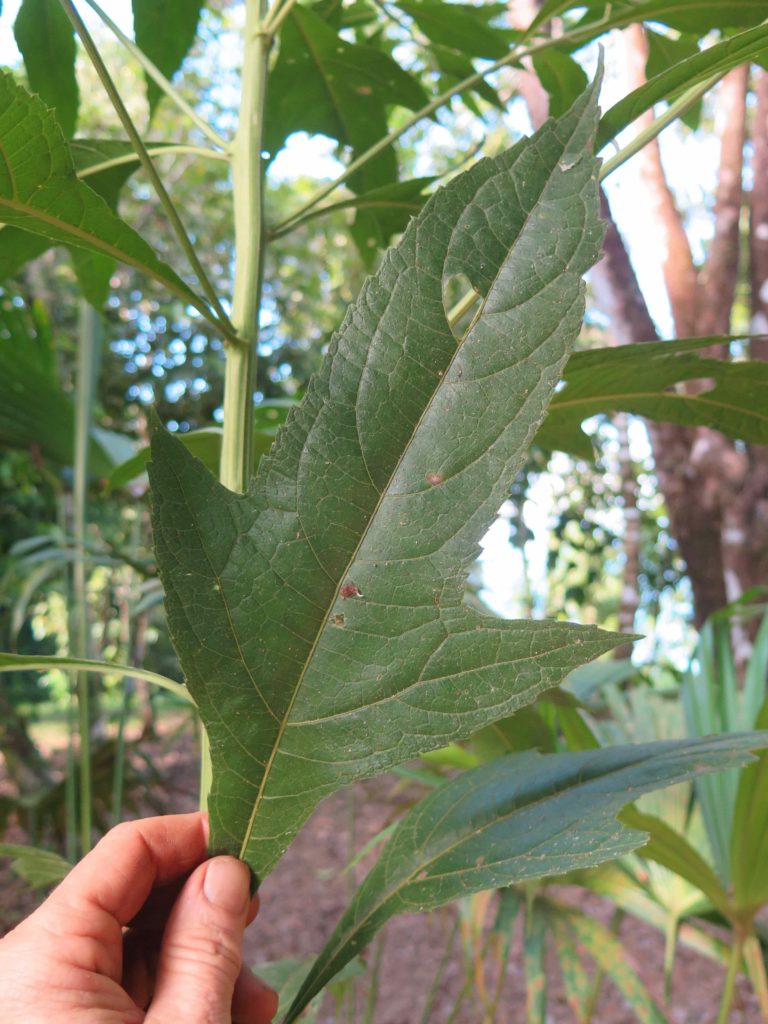
Gavilana 
Aceituno 
Simaba cedron 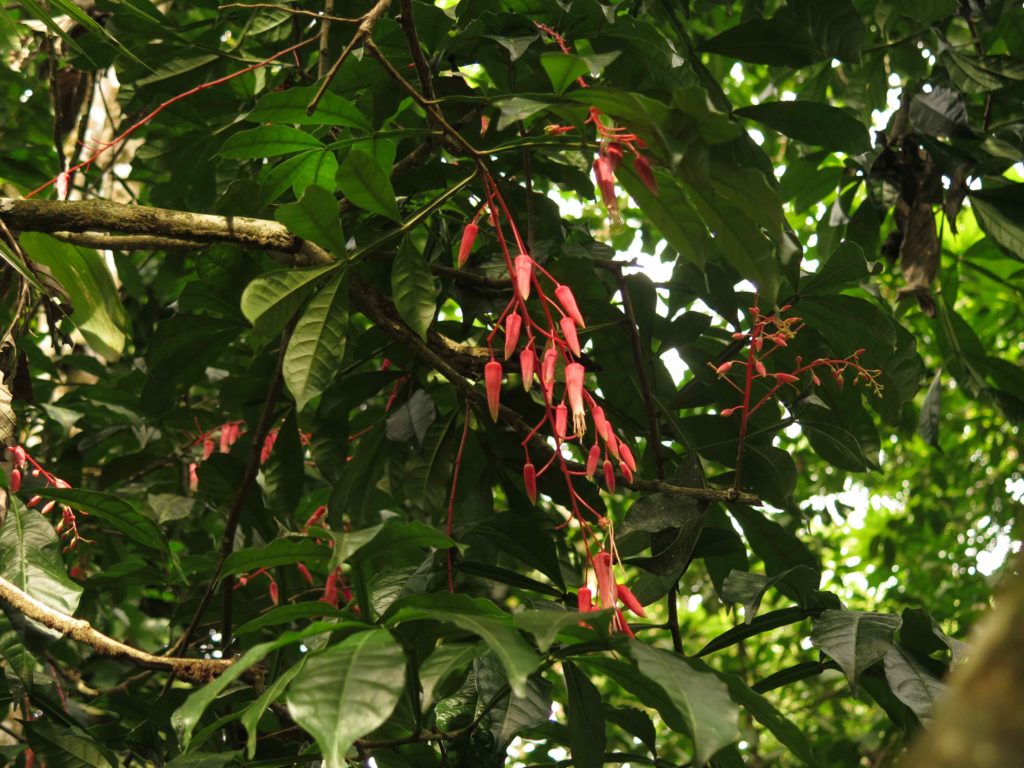
Hombre Grande ~ Bitterwood
Red is Fire, Fire element related trees…
Of course, when mentioning plants with the color red, there a few that must not be left unmentioned. Along the beach we have the Tropical almond tree, Terminalia catappa of the Combretaceae family. This tree a favorite food of the Scarlet Macaw a flashy red bird with long red tail feathers. In March, the peak of the dry season, the tree’s leave’s turn bright red, then they fall. This signature of the tree has allowed indigenous peoples to determine its use in lowering high blood pressure. The Doctrine of Signatures is a phenomena that has been around since the old days, and was a method of investigation and discovery, understood by Dioscorides, Galen and Paracelsus. Then for plants with red we have the all mighty Achiote, Bixa orellana, of the Bixaceae family. Achiote, known as Annato, is a remarkably useful woody treelet, known as Fire Wood and there are many varieties. Achiote has a bright red furry fruit, but the criollo variety, a variety we are particularly fond of, has a green hairless fruit, both are capsule like with abundant small seeds covered in a bright red, oily paste. The tree is highly medicinal and useful. The peeled bark is boiled and drunk to alleviate hemorrhage. A leaf tea is used to stop vomiting. The oil from the seeds heals stomach ulcers and gastritis, the red pigment is a ceremonial body paint, and from the wood, the Waorani make a fire board with a drill made from the trees branches, that when rubbed together make fire, hence Fire Wood.

Achiote 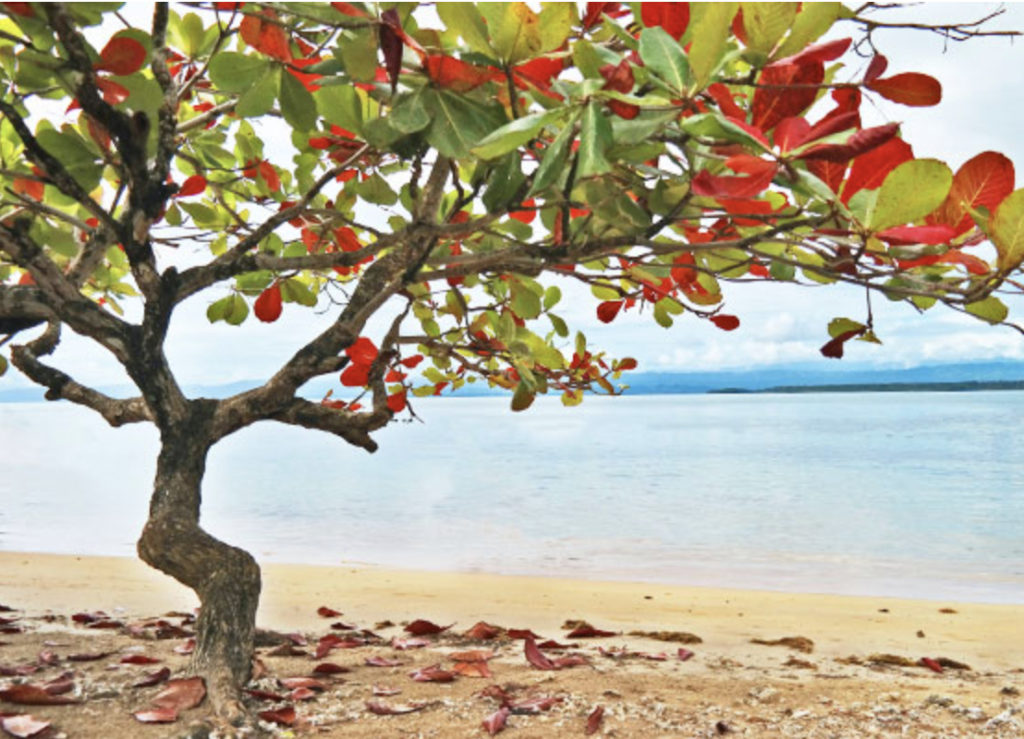
Tropical Almond
One last tree for now, a rich oily favorite…
I want to leave you with one last tree, of the so many here present, one we love so very much, they are in their third year of ripening here. A tree symbolic of the rainforest. These are the Pasu trees, Gustavia longifolia a Brazil nut relative, in the Lecythidaceae family. Pasu can be described somewhat like the cross between an orange avocado and a pumpkin. Native to the Amazon, oily and delicious, it is considered a sacred tree among the deep forest Waorani who refer to her as Nönginka. Her white, tinged in pink flowers are amazing large, up 8 inches in diameter, voluptuous, velvety rich is their aroma, they are fragile, they literally drop apart in your hands. This tree represents the fragile and precious gift that is the rainforest and biological diversity, and that with care we must love and protect her.
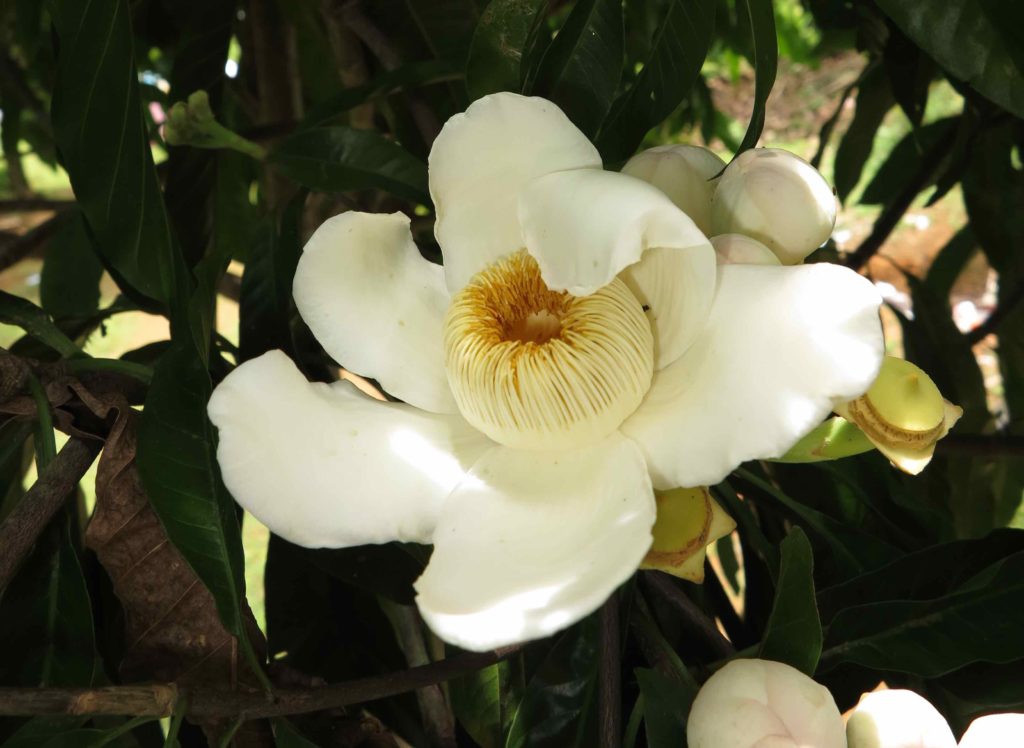
Pasu flowers 
Pasu fruit
At Ocean Forest Ecolodge, given the size of the property space is limited, for this reason we have been expanding the garden up the hill a way’s, we’re we have been planting an even larger Permaculture garden.
Cocoterra Rainforest Permaculture

A project called Cocoterra Rainforest Permaculture, we are restoring eight hectares of abandoned pasture land, and aiming to create a Permaculture school, that can serve as a model to the local villagers and in international participants and volunteers. And as a place to connect with nature. To learn more please visit www.rainforestpermaculture.org. You can join us, by signing up to our mailing, stay posted on upcoming Permaculture workshops and Ethnobotanical immersions.
Hope to See You soon in the Garden!
I look forward to meeting you here in the garden, and invite you to join us as a guest or volunteer, for more info, also visit http://www.oceanforest.org/volunteering/
UNITED PLANT SAVERS
This article was written for the upcoming publication of the UPS





